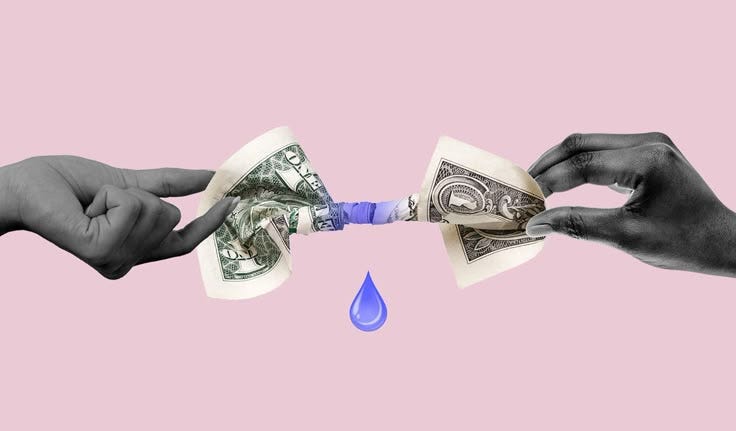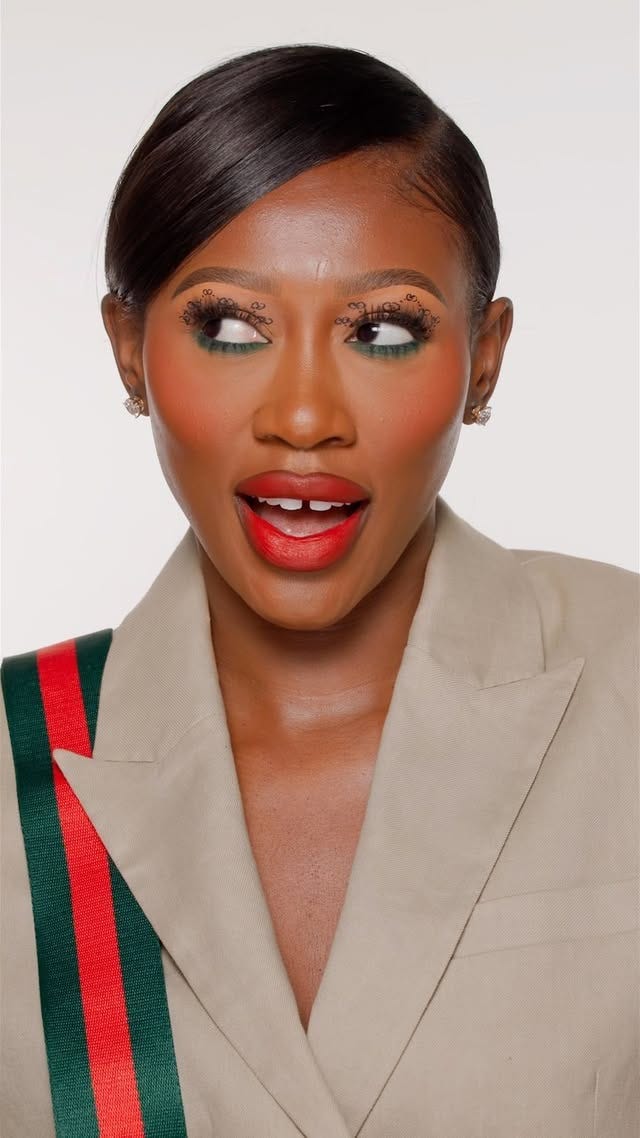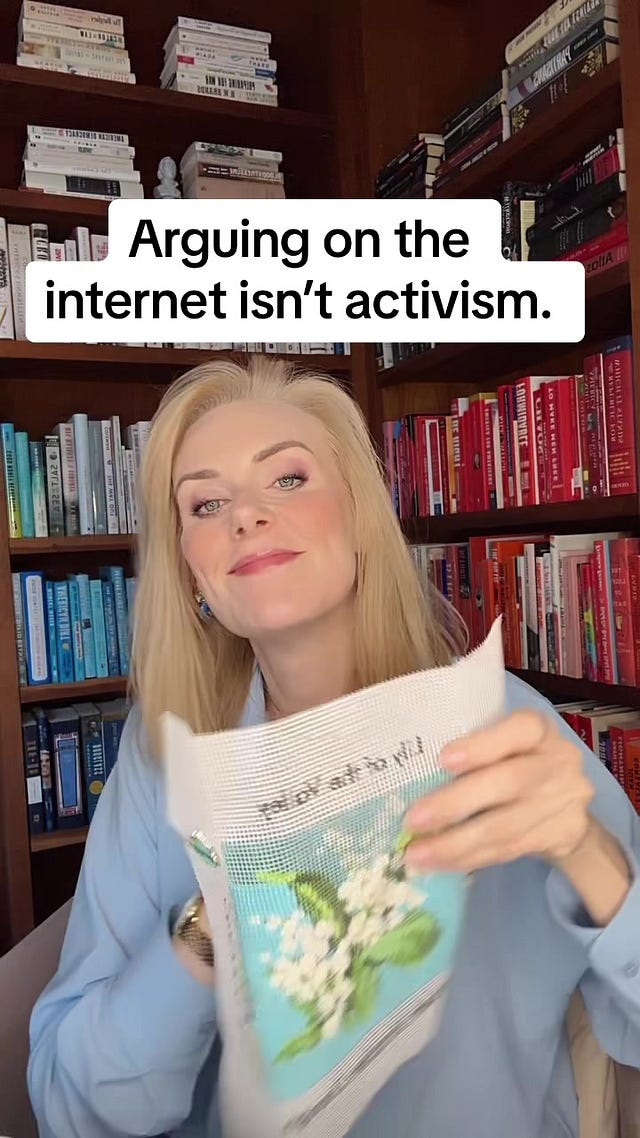The Rise of the Infotainer: Why “Being Smart” is Marketable Again
Smart is the new sexy and it’s changing brand marketing
Are we all seeing the influencers flocking to LinkedIn?
And the make up artists now doing deep dives into the history of beauty trends?
For years, cultural capital was built on aspiration, on curated lifestyles, designer hauls, and the illusion of ease but now we’re seeing a major shift.
From reality television stars turning into fashion moguls, to meme accounts morphing into media companies, the last decade has shown us that influence can come from the most unexpected places.
But one shift that’s only just beginning to get the attention it deserves is the rise of the infotainer, a creator who blends intellectual credibility with entertainment value.
Think of it as the crossover between a thought leader and an entertainer, someone who can break down a complex idea and still keep you watching.
It’s the “new” phase in content, one where the most powerful voices aren’t just the ones who can make us laugh or sell us something, but the ones who can actually teach us something useful. The creator economy, once defined by glossy feeds and sponsored posts, is quietly pivoting towards substance. Insight now matters more than aesthetics. Intelligence is becoming influence.
For some, this shift is exciting. For others, especially those who built their brands on the old rules, it’s disorienting, confusing and they honestly don’t know where they stand.
You’ve probably noticed it already. More and more influencers are moving to platforms like LinkedIn, they’re swapping fast fashion for tailoring, small talk for strategic commentary, and curated visuals for content that unpacks industry trends.
They’re speaking in business frameworks, offering analysis, and positioning themselves as trusted sources.
And no, it’s not a coincidence…in this industry, very little is.
Behind the scenes, management teams have been paying attention. They’ve started pushing their talent towards credibility-building content because they’ve recognised what some of us spotted a while ago, when everything else shifts, expertise is one of the few things that truly holds its value.
Everything else? It works, but for how long?
The Cost of Living is Changing the Content People Want
With the cost of living continuing to rise, and financial pressure now a day-to-day reality for many, people’s priorities are shifting. Content that once looked aspirational, endless hauls, luxury unboxings, holiday after holiday, now feels tone-deaf, or worse, irrelevant. What once inspired envy now prompts eye-rolls.
People don’t want to see what you’ve bought. They want to understand how you think. They want content that helps them figure things out, how to manage their money, grow their skills, make smarter career moves, or understand the global forces shaping their day-to-day. In a world that feels increasingly uncertain, creators who can offer real clarity are cutting through.
Those who offer value, context, and perspective are no longer just nice to have. They’re what audiences are actively seeking out.
This obviously doesn’t mean that content that only entertains is not working…it works but only a select few are getting paid well for it.
“Consider Me a Thought Leader”
The creator economy is now a multi-billion-pound sector, with estimates placing its value at over £200 billion in 2025.
But while the early years rewarded relatability, mass appeal, and a good editing style, we’re now entering a phase where value creation looks very different. The creators gaining traction now are the ones who deliver something deeper, trust, longevity, and intellectual depth.
Even at a micro level, the shift is clear. A few months ago on UK TikTok, we saw creators opening up about how difficult it’s become to “secure the bag.” A candid video from a creator we all know and love started a broader conversation about the difference between what worked at the start of TikTok, silly dances, personality-driven skits, and what works now.
Some asked the obvious question: where was their management? Shouldn’t someone have helped them evolve?
Because now, the creators thriving are the ones who are pivoting quickly. They’re taking on advisory roles, offering how-tos, and breaking down their own success strategies.
Take Vanessa, a well-known beauty creator who just launched an eBook teaching her followers how to make content that converts, just like she does. It's a smart move, and it reflects a wider trend, people don’t just want to consume your content, they want to learn from it.
Why Now? What the Data Tells Us
1. YouTube: Where Learning Has Become Leisure, and Lucrative
YouTube, once dominated by vlogs and reaction videos, is now the world’s biggest informal learning platform. Educational content pulls in over 500 million daily views, according to Google.
Creators like Ali Abdaal, Veritasium, and Kurzgesagt are turning complex subjects, like astrophysics, time management, and philosophy, into content that drives both deep engagement and commercial success. YouTube even launched a dedicated “YouTube Learning” vertical to support this growing category.
For marketers, the logic is simple. The longer people watch, the more monetisable the content. The more value you deliver, the stronger the brand uplift. Educational content doesn’t just attract views, it builds trust and authority at scale.
2. TikTok: From Frivolous to Functional
TikTok’s reputation as a Gen Z dance app is outdated. Yes, it’s still entertaining, but the fastest-growing content category is now educational explainer content.
Educational content is among the top-performing categories on TikTok, accounting for 16.1% of the best-performing content types
One in four TikTok users in the U.S. use the platform for educational purposes, and 69% of those users report that TikTok videos have helped them complete their homework.
Creators like @ sharonsaysso, who simplifies civic issues with humour and clarity, are leading this shift. And the platform is rewarding them. The algorithm, once geared toward surface-level virality, now promotes content that gets saved, shared, and rewatched.
 Tiktok failed to load.
Tiktok failed to load.Enable 3rd party cookies or use another browser
3. Podcasts
In 2025, global podcast listenership surpassed 584 million, up 6.83% year-on-year. But beyond the numbers, what matters is the kind of content that’s rising to the top.
Shows like Lex Fridman, The Daily, and Diary of a CEO are blending smart thinking with human storytelling. They offer people a chance to go deeper, to focus, and to connect, all in a world where most content is designed to be consumed in seconds. Podcasts feel slower, more reflective, and more valuable. And audiences are showing up in a big way.
For brands, they’re not just another channel. They’re a space for trust-building and thought leadership, where audiences are ready to listen, and remember.
We’re moving from an attention economy, where clicks ruled, to an influence economy, where credibility, clarity, and contextual insight are the new levers of growth.
The Psychology
Cognitive Engagement
Studies from Stanford and MIT show that learning triggers the same pleasure centres in the brain as music and laughter. When people feel like they’re gaining insight, they stay longer and engage more.
Value-Driven Storytelling
According to the Edelman Trust Barometer, 64% of consumers prefer brands that educate rather than promote. Brands that give audiences something meaningful, whether it’s a skill, a perspective, or a new way of thinking, earn stronger recall and deeper loyalty.
Intellectual Aspiration
Knowledge is a status symbol, especially for younger audiences. 71% of Gen Z follow creators who help them grow intellectually, according to Morning Consult. For them, “learning something new” is one of the top reasons to hit follow.
What Brands Should Do Next
Turn your content into a knowledge asset. Don’t just launch products, launch ideas. Use campaigns to educate, to explain, to break things down. Make people feel smarter because they heard from you.
Work with creators who know their subject, it’s not just about reach anymore, it's about influence with depth. Collaborate with those who can teach, who understand their space, and who can communicate that clearly.
Design for platform-native learning. LinkedIn wants frameworks. TikTok wants punchy insight. YouTube wants rich, explainer-style depth. Podcasts want your undivided attention. Play to each platform’s strength.
Trends will fade, algorithms will change, platforms will evolve. But real expertise, packaged in a way that’s engaging, relevant, and easy to connect with has staying power.
Creators who can teach and entertain at the same time aren’t just participating in the creator economy. They’re building the blueprint for where it's headed next.
Until next time, keep listening, keep learning, and keep evolving.
And make sure you digress often. Curiosity is key to winning in this game.
Charlotte
If you missed last week’s newsletter read it here:








I wonder how much of this is driven by the entrepreneurialisation of everything? We have commercialised hobbies to death. Everyone needs to have a side hustle. LinkedIn is full of posts on how to be successful on LinkedIn. Everyone has a course, a podcast, a coaching practise or selling strategic services. Cultural commentary is recycled by the prosumers and creators who hope to ride it commercial gain. In a market where jobs are at risk of being eaten, and "taste" is the final human trait we hope AI can't replicate, it's essential to show our humanity, and understanding of the world, in a world which is harder to make sense of. Nikita Walia coined the term "tiktok oracle", and I think she sums the potential shallow nature of it well. We are offloading our own cognitive effort to those who can give us the 3 minute or 3 seconds summary, and are hoping we'll like, subscribe and pay for the shortcut.
This was such a good article! You articulated themes I had noticed but did not know how to verbalise myself